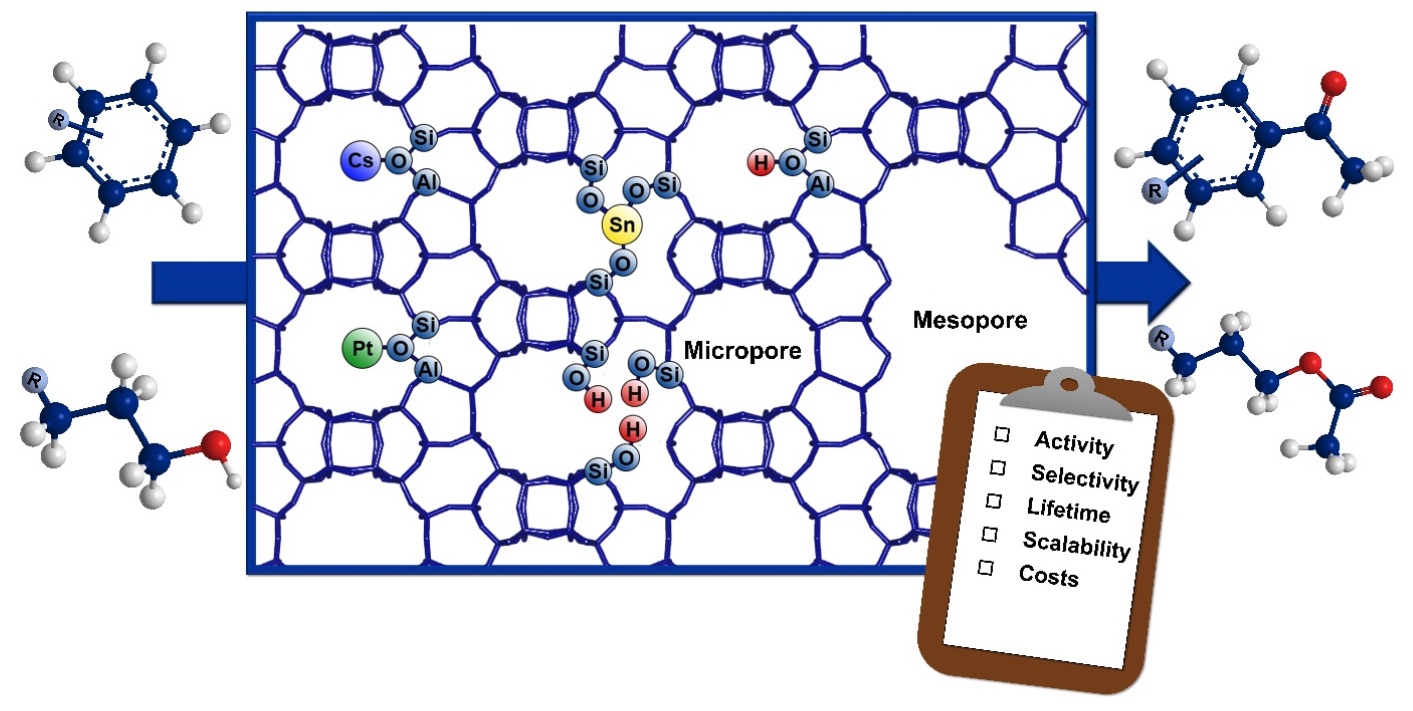Development of continuous heterogeneously-catalyzed acylation processes for vitamin synthesis
Vitamins are organic compounds that are vital for human and animal nutrition.1 The production of these organic compounds typically involves multiple steps that still mainly rely on stoichiometric reactions conducted in batch operation. In addition to generating large quantities of waste, obtaining high selectivity and conversion can be difficult, thereby increasing the cost and environmental footprint. For example, acylation reactions are typically catalyzed by mineral acids or bases. This work targets the development of a continuous heterogeneously-catalyzed acylation process (Figure 1). The first step involves the identification of promising catalytic materials and suitable reaction conditions to obtain high selectivity, which is particularly important if there are multiple possible reacting centers. Zeolites are crystalline microporous solids that can be prepared in large scale with tailored acid (Brønsted/Lewis), base, or redox functionalities.2 The confinement of well-defined active sites within pores of molecular dimensions provides unique opportunities for the design of highly selective catalysts.3 After establishing the thermal and chemical stability of the substrates, a broad set of zeolite catalysts are first screened in batch operation to compare the activity and selectivity as well as the possible substrate-catalyst interactions. Once potential leads are discovered, they will be further studied under continuous operation.

Figure 1 Scheme illustrating the tunable functionality of zeolites and design criteria for the development of a continuous acylation process.
[1] M. Eggersdorfer, D. Laudert, U. Létinois, T. McClymont, J. Medlock, T. Netscher, W. Bonrath, Angew. Chem. Int. Ed. 2012, 51, 12960.
[2] S. Mitchell, A. B. Pinar, J. Kenvin, P. Crivelli, J. Kärger, J. Pérez-Ramírez, Nat. Commun. 2015, 6, 8633.
[3] E.G. Derouane, J. Mol. Catal. A: Chem. 1998, 134, 29